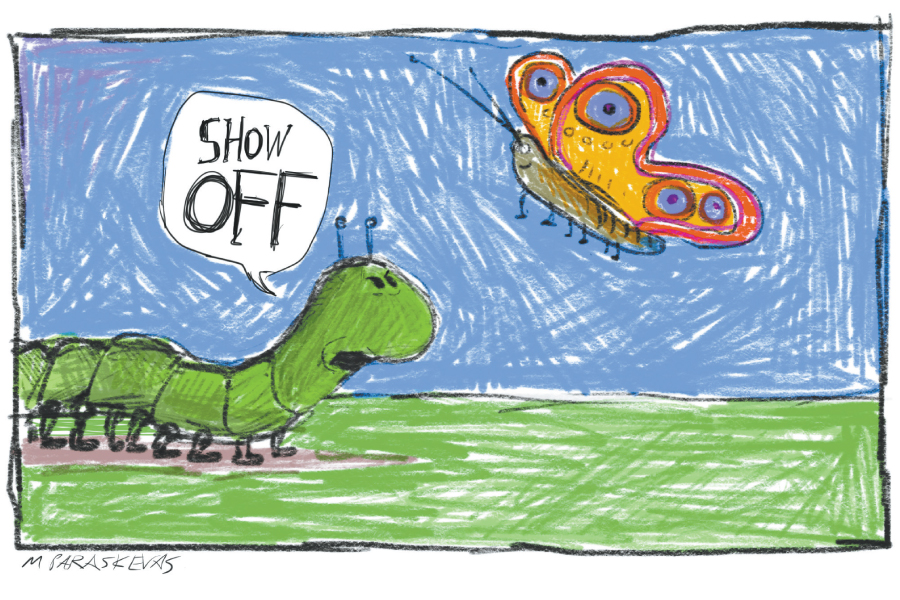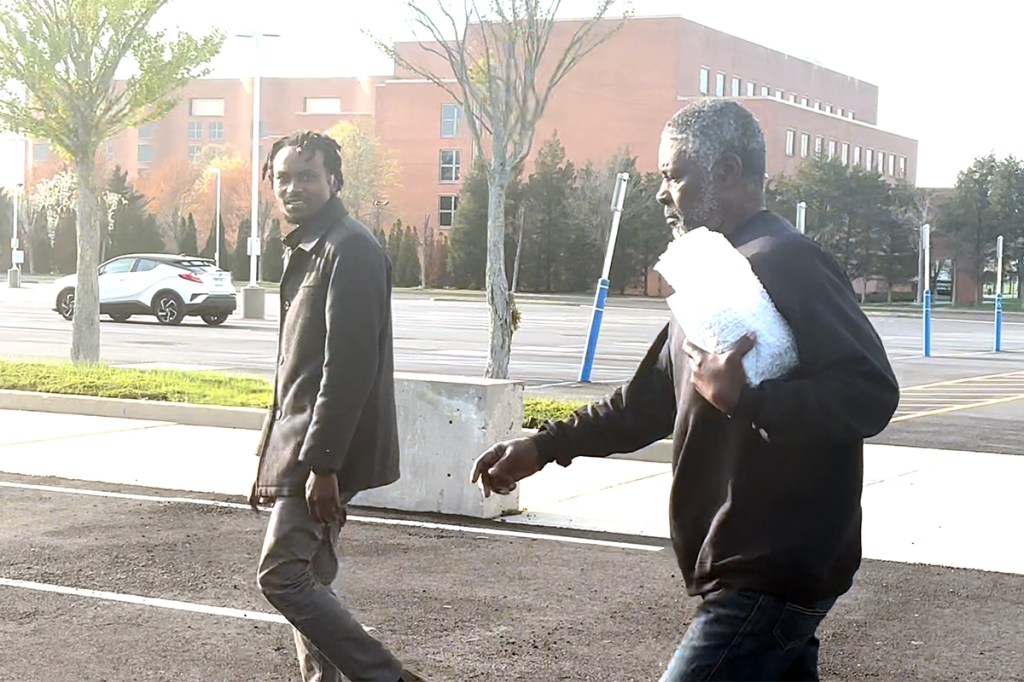20 Spots the Hamptons Left Behind: Sleazy Bars, Race Tracks and More

When I came to live on the eastern end of Montauk as a teenager, this place was as local as, for example, Ronkonkoma. The East End was sleepy, undiscovered, and, if a dog were to lie down in the middle of the road to take a nap, nobody would bother him.
Today it has transformed into a full-blown international resort of billionaires and celebrities. The entire western world watches this place enviously while taking note of every new change and wrinkle.
In this context, I find it amusing to look at a present-day enterprise and, in my mind, see what I recall from 55 years ago. There’s people walking around on the property today, beautiful and well dressed. There were other people, with other attributes, maybe better ones, maybe worse, that walked around back then in work boots and peaked caps.
Here are my top 20, not in any particular order…
Bay Street Theatre, the great live venue in Sag Harbor, was, 50 years ago, an off-limits manufacturing warehouse for military aircraft parts made by Grumman. (The buildings were constructed before my time as a torpedo testing station during the First World War.)
The Bridge, one of the fanciest golf courses in the Hamptons, with a membership fee north of $500,000, was the Bridgehampton Race Circuit, a track similar to, but with a better reputation than, Watkins Glen. It smelled of diesel fuel, oil, fumes and, occasionally, explosions when cars caught on fire. I went to numerous events there. The noise caused windows to rattle. The cars were driven at speeds close to 200 miles an hour by well-known international racing drivers such as Dan Gurney, Jackie Stewart, Bruce McLaren and, when he made a second career out of auto racing, actor Paul Newman.
In Montauk, what today is the oceanfront Sloppy Tuna, frequented by the 20-something hip New York crowd, was when I got here a dry-cleaning laundry. It had been built as such only a few years before my arrival, to handle the laundry needs of the booming motel business. During the 10 years just prior to my arrival, nearly 40 motels were built in Montauk. I never set foot on the premises when I first got here, didn’t have to, but often wondered if bad chemicals were being left to go down a pipe into the ocean. There were no laws to prevent that at the time.
In East Hampton, what is today the chic Juicy Couture apparel shop on Newtown Lane was the village police station. You went inside and there was a desk patrolman sitting high up on a platform. They had the village lockup in a back room. In front on the sidewalk were two gas pumps. The place was no longer being used as a commercial gas station, but the pumps worked. The police cars gassed up there.
A classy restaurant called Page at 63 Main occupies the space on Main Street in Sag Harbor which, when I got here, was the sleaziest, dirtiest bar and grill on the East End, the Sandbar. Drunks would get tossed out of the Sandbar onto the sidewalk on occasion. Directly across the street was the second sleaziest, dirtiest bar and grill on the East End, called the Black Buoy. Both of these places, with sawdust sprinkled on the wood floors, were legendary in their time. The Black Buoy is where LT Burger, the home of the $14 hamburger, is today.
In East Hampton, on the corner of Main Street and Newtown Lane where there is today Elie Tahari, was, at the time I came here, a sewing repair and dressmaker shop run by a very beloved woman named Hattie Goldberg.
A lot of very loved women ran successful stores or restaurants in that era. In Southampton, where today there is the Red Bar, Marge and Renato Galante ran an Italian restaurant that for several generations had been called Balzarini’s. Balzarini’s was the maiden name of Mrs. Galante.
Where Nick & Toni’s is today was for more than 30 years an Italian restaurant run by Ma Bergmann and her husband. It was called Ma Bergmann’s and her whole family helped out. I recall going in there one night with my young family to find there was only one table left—where Mrs. Bergmann’s daughter was doing her homework. She cleared out and went upstairs to finish so we could have the table.
When I first got here, the widow of painter Louis Guglielmi, a loving, interesting woman who lived in Amagansett, was running Guglielmi’s, an Italian restaurant on the site which is today The Stephen Talkhouse.
Mary Damark owned and ran the deli on Three Mile Harbor Road when I first got here. It was called Mary’s although there was no name on the door. She was another of the many beloved women who ran retail businesses here. After she died, her daughter ran it but changed the name to Damark’s, which is what it is today. Still, people in that community today refer to it as Mary’s in order to remember that woman fondly.
The very upscale restaurant 75 Main in Southampton was, at the time I moved here, a down-and-out local dive called the Anchorage. For many years thereafter, the neon sign that ran vertically on the outside of the building on up the second floor remained. A few weeks after the Anchorage closed, it was a French café, bistro and patisserie. I once watched a couple of drunks wandering up to the front door, not having been there for a while, peering in, looking up at the neon, then shaking their heads and walking off.
If Sag Harbor had a torpedo testing station during the First World War, there was one leftover from the Second World War in Montauk on Fort Pond Bay called, unremarkably, the Naval Torpedo Testing Range, Montauk, Long Island. Torpedoes would be brought to Montauk by train, fired off on a course just under the surface of Fort Pond Bay while officers in a seaplane flew overhead to observe. Today that site, which consisted of about ten cinderblock concrete buildings (all dismantled and carted to the dump), is now the condominium Roughriders Landing.
What is now the community center in Montauk, a massive 50,000 square foot building, was when I came here an indoor holding pen for cattle. The cattle were driven down to it from the Deep Hollow Ranch up near the Lighthouse, then held there to be eventually herded across the street to the railroad station and into cattle cars for transport to the slaughter houses up the island. The building had originally been built as a glass-roofed indoor tennis court. It was also used as a boxing ring with bleachers before I got here, then for a while, when I first got here, as a movie theater and a summer stock Broadway show facility called the Montauk Playhouse. The final name stuck.
On Jobs Lane in Southampton, there was a dress shop run by a very high society well-to-do woman from the social set by the name of Ninna Murray. Ms. Murray was a very vocal supporter of her class of people, and frequently wrote to the local papers complaining about them. She referred to them as “the people who eat ice cream on the street.” Today that store is a Carvel.
The store on the northeast corner of Hampton Road where it meets up with Main Street in the very center of downtown Southampton is today a Pottery Barn. Before that, for more than 60 years, it was a Saks Fifth Avenue, but when I first came here with my parents it was the Southampton Town Hall.
Bridgehampton had seven gas stations when I first moved here. Mostly it was because Bridgehampton was completely surrounded by potato farms in those years, and so it was a farm town where seed and equipment were bought. The gas stations largely repaired farm equipment as well as automobiles. The one on the southeast corner in the center of town at the monument is today completely torn down. The mansion behind it is being restored as a historical museum. The gas station on the northwest corner at the monument, directly across from the first one, is also torn down. It is a lot for sale now, but for a long time was a Beverage Barn. A gas station on Lumber Lane just north of the tracks is now a private home. The gas station at the corner of Corwith Lane and Main Street on the north side is today a florist and toy store. The gas station on the southwest corner of Halsey Lane and Main Street is now torn down and replaced by a beautiful new building, Urban Archaeology, which sells expensive stone, modern or antique garden, bathroom and kitchen fixtures. The gas station across the street, at the corner of Butter Lane and Main Street, is today an office building for an investment firm. Only the gas station to the west of town before you get to the shopping center remains. And it has become a full-blown gas station and convenience store facility.
The Bridgehampton Commons, today a complex of 20 stores and restaurants, was, when I got here, the Hamptons Drive-In, where we took dates to make out in our cars while watching black-and-white horror movies or comedies on a huge screen.
World Pie in Bridgehampton, an Italian restaurant, was the original literary bar and café called Bobby Van’s, which subsequently moved across the street. The first year I was here, what the following year was to become Bobby Van’s was a tavern with a nightly barbershop quartet for entertainment. Waiters dressed in red-and-white-striped pants and blue vests too.
On Main Street in Westhampton Beach, the rough disco Club Marakesh, a fixture for years and years, is now the Hudson City Savings Bank.
Pier One on Hampton Road between Southampton and Water Mill was originally a big bowling alley and, after that, for many years, a disco.
What is now the McLoughlin Construction Corporation on Main Street in Bridgehampton, was originally built as a private home in 1904. It was the home of Dan’s Papers from 1971 to 2012, which is how I see it when I drive by today. In 2012, however, I sold the building and we moved our offices to a new and larger building on County Road 39 in Southampton.
Times change but things stay the same? Wrong.



